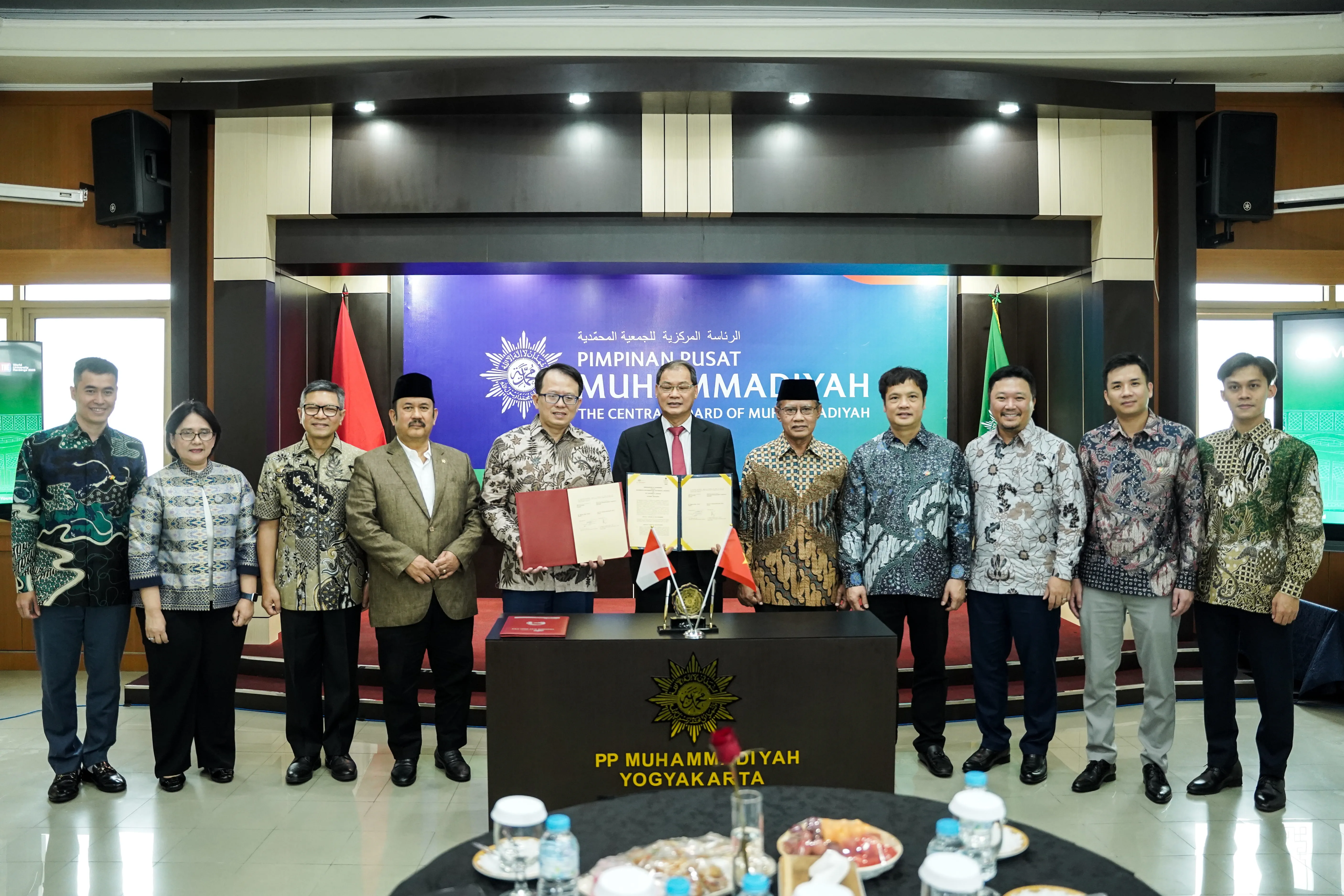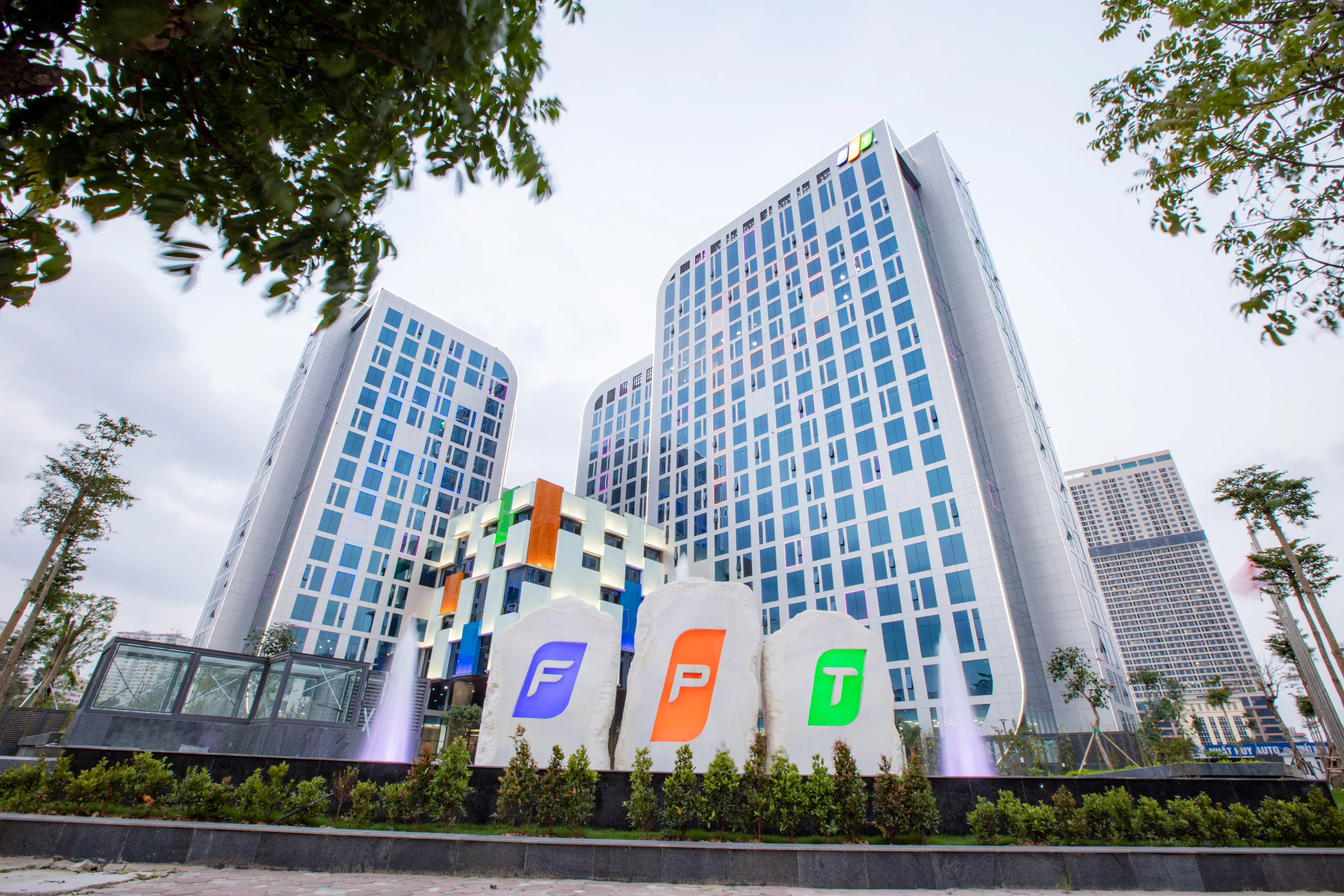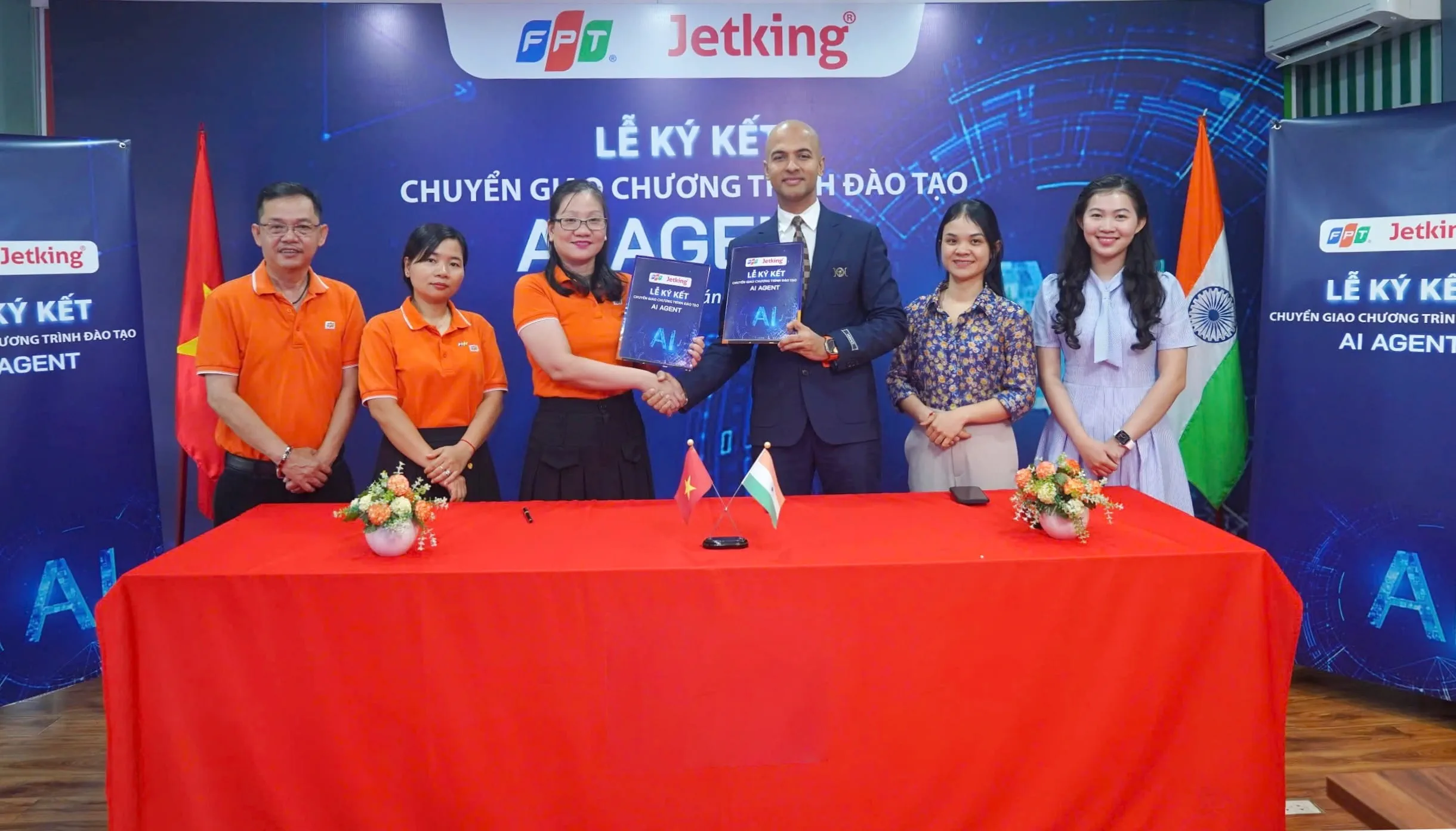Vietnam needs to create technology products with global application
•
14/07/2025
Twenty years ago, FPT was one of the first Vietnamese enterprises to dare to step out into the world. In addition to the skepticism of the domestic population at the time, friends from outside were also unclear about where Vietnam was or if there was conflict. However, Vietnam is in a completely different situation now. FPT Corporation has not only fulfilled its "mission of paving the way" after more than 20 years of going global, but it has also joined other Vietnamese businesses in their quest to dominate the international market.
Resolution 57-NQ/TW of the Politburo on breakthroughs in science, technology, innovation and national digital transformation sets a target of having at least 5 digital technology enterprises on par with advanced countries by 2030. So how should Vietnamese digital technology enterprises "prepare their luggage" and what policy incentives are needed to be a "launch pad" to go global? In the series of articles "Resolution 57 - The key to bringing Vietnam into the new era", VNEconomy had an exclusive conversation with Mr. Nguyen Van Khoa, CEO of FPT, about his journey of more than 25 years of persistently going global and inspirational lessons from the "leading bird" of the technology industry.

If you only choose within the safe zone, you will not be able to break through.
FPT began its journey to the global market in 1998. Looking back, what lessons do you think FPT learned on its journey to conquer the global market that Vietnamese businesses, especially digital technology businesses, can learn from?
A company must first be steadfast if it hopes to reach the great sea. Businesses with an innovative mission that dared to venture overseas and step outside of their comfort zone encountered numerous obstacles and hurdles decades ago. FPT decided to export software to the world at that time. "Can it be done?" was the query raised by the skeptics in the public. In addition to the fact that there were little resources available at the time to assist companies expanding overseas and that the Vietnamese IT sector was not well-known, FPT was adamant about defying public opinion and was not scared to take chances or face difficulties.
In fact, at that time, in order to “survive”, most Vietnamese enterprises chose short-term opportunities and quick profits, and we did the same. But we soon realized that this path was not sustainable for a long-term future, so FPT’s leaders decided to choose another path – the path to the world with the intelligence and capacity of Vietnamese people. It was the perseverance on this path that brought us success.
People are another element that contributes to our success as we expand internationally. FPT has assembled a group of individuals who have the courage to take risks that others are afraid to take. Our ambition will prevent us from breaking through if we just decide to stay in the safe zone. However, when we dare to put ourselves in a position where we risk failing, the chance to shift course will present itself.
Only when a company attracts bright, driven, and like-minded coworkers can it grow sustainably. At the same time, it needs excellent human resources in order to reach the global market. As a result, FPT has prioritized training and developing technical resources for Vietnam since its inception. Working with major organizations throughout the world, particularly at this time, has made us aware of their severe dearth of human resources with the expertise, know-how, and ability to implement and use AI. Vietnam and FPT have a long-term chance to solidify their place in the AI era because of their youthful population, which is enthusiastic about technology and has desires to advance.

Does that mean that the current IT human resources are an advantage for Vietnam and digital technology businesses to go global?
The US, Europe, Japan, and South Korea – the leading economies – are all facing the challenge of an aging population. Meanwhile, Vietnam has a golden advantage: a young population, passionate about technology, and a desire to rise up. This is not only an opportunity, but also a time for Vietnam to become a center for providing high-quality technology human resources for the world, especially in the fields of AI and semiconductors. In that context, FPT aims to equip 500,000 employees with AI knowledge and skills and train 10,000 semiconductor engineers by 2030.
However, human resources are insufficient on their own. In order to succeed, Vietnamese technology companies need to make significant investments in R&D. R&D investment rates need to be high enough to have an impact and make dreams come true.
So, how much has FPT invested in R&D?
We spend about 5% of pre-tax profit on R&D. Additionally, FPT is expanding into higher-level technology value chain stages, such as product production. Since its founding, FPT has aimed to develop into a new kind of organization that is strong via innovative work in science, engineering, and technology and that promotes the prosperity of the country.
One could argue that FPT began as a technology business. Technology companies like FPT are directly responsible for promoting research and development of digital technology products made in Vietnam, since Resolution 57-NQ/TW is a revolution. Science and technology are now more important than ever before, serving as a foundation for the nation's progress. This presents FPT with both an opportunity and a motivation to keep fostering and advancing the "Creative GEN" and the role of a trailblazing company in the innovation ecosystem. We will unwaveringly keep doing things that no one else has done, leading the way in innovation to help our nation grow prosperous and strong in the New Era.
In order to conduct research and development, we require both domestic and foreign talent in addition to a sizable enough investment rate. We need more partners who have big ideas, large actions, and especially the courage to take on challenging tasks that others are afraid to take on.

Global businesses must create products that the whole world uses.
It will take FPT twenty-four years to reach the 2023 revenue target of $1 billion USD from IT services for international markets. Is that too long, sir, for a digital technology company to grow and make a reputation for itself in the world market?
More than 25 years ago, FPT went global when Vietnam was still a question mark. Many customers when meeting us asked “Where is Vietnam? Is there still war? But now it is very different, Vietnam has a position and made great progress in the international arena. This is a solid foundation for Vietnamese businesses to step out into the world.
Not only different in position, enterprises also receive strong support from policies. Vietnam's development in the New Era is centered on research, technology, and enterprises, according to the strategic quartet of Resolutions 57-NQ/TW, 59-NQ/TW, 66-NQ/TW, and 68-NQ/TW. It places special emphasis on establishing the necessary framework, including policy procedures, significant scientific, technological, and innovative issues, and the nation's digital transformation, for technology companies to engage in resolving as a basis and launching pad for international outreach.
Consequently, I think that companies nowadays don't have to wait 25 years to expand internationally. The key is to have the courage to take chances and venture outside of our comfort zone, since the opportunity is right in front of us. And offering information technology services is one of the best ways for Vietnamese companies to expand overseas. However, Vietnamese technology companies must produce internationally used products if they are to meet Resolution 57-NQ/TW's goal of having digital technology enterprises on par with developed nations.
The two sectors of the technology industry are delivery of services and product manufacturing. Offering services is similar to "selling traditional rice" in that you always have clients and a consistent income, but in order to achieve great things and make innovations, you must produce goods. Producing goods is similar to selling "specialties"; all it takes is one mouthwatering dish to establish your reputation and gain international recognition.
I frequently make a joke about how working in technology is similar to writing music. All it takes to generate a lifetime of resonance is one timeless song. Similar to technology, having a great product with unique colors can help a firm become well-known throughout the world and grow over time.

How many digital technology companies in Vietnam, in your perspective, are on par with or have recognition in the global market?
In fact, Vietnam has more than 5 strong international technology brands. In addition to FPT, Viettel, VNPT, we also have brands such as CMC, TMA, KMS or unicorns such as VNG, Sky Mavis.
However, by 2030, Vietnam hopes to have five technological brands comparable to those of developed nations, and by 2045, ten companies.
In my opinion, it is comparable in terms of advanced technology, market share, and firm size. We need to work hard to do this, and the "four policy pillars" will help us get there faster and more effectively.
A company that want to expand internationally must produce products that are used by people globally. Although it is extremely challenging, well-known companies in the technological sector include Microsoft, Google, Meta, SAP, Oracle, and others. Not even the most technologically advanced nations, like Korea or Japan, have many globally popular items. Vietnamese companies that wish to grow must produce goods that are used globally.
How can Vietnamese technology businesses create products that reach the global market?
From my personal perspective, there are two ways: one is for businesses to develop themselves according to market demand; two is for the State to order large problems, promote the public-private partnership model, and give opportunities to businesses. However, this “ordering problem” approach is not yet popular.
When Korea chose to construct Incheon Airport in 1992, the Korean government had the option of selecting a foreign contractor, but instead they gave local businesses the chance. Consequently, a group of Korean construction firms known as "Korea Airport Engineering Corp (KAEC)" served as the primary contractor for the building of Incheon International Airport.
Vietnam also needs such thinking: flexible, bold and with long-term vision.
Currently, Resolution 57-NQ/TW has clearly defined spending 2% of GDP on research and development (R&D), 3% on innovation. Many people are still used to thinking that technology is just a tool to support national governance. If we understand the content of Resolution 57-NQ/TW, this thinking must change. When we consider technology as just a tool, we can use it or not. Resolution 57-NQ/TW does not consider technology as an external tool, but establishes the viewpoint that national governance must be based on technology.
The perspective that views institutional and policy reform as a catalyst for national competitiveness is another aspect of Resolution 57-NQ/TW that we especially like. One may argue that Resolution 57-NQ/TW is a plan for the future that would usher Vietnam into a period of national growth.
In other words, the mechanism already exists. The issue is how to put it into practice, how to formulate the problem, and who will have the chance to address the nation's major issues.

Resolution 57-NQ/TW is a long-term strategy, designed to nurture the future. So, in your opinion, what needs to be done at the present time to create the future of Vietnamese technology?
“Science” always comes before the word “technology”, because the core of technology is science and the industrial production field is where science shows its value most clearly.
In actuality, Vietnam has incorporated some basic technologies into important industries like the manufacturing of steel, building materials, wood processing, bricks, concrete, and road construction, among others. The GDP is growing as a direct result of these industries. The issue, though, is that we continue to rely too heavily on imported equipment. The most prominent example is the textile sector, which is a major exporter but imports everything from sewing machines to threads and needles from China. That implies that we don't actually have control.
To make meaningful changes, we must invest systematically in science and technology, and that must start with education.
FPT proposes a fundamental change in thinking, especially in technology education and promoting the role of private education. It is necessary to focus on practical training, promote innovation and internationalize human resources to create generations with global competitiveness.
Currently, many institutions still deliver instruction that is far from practice, with little relation to scientific research and industrial needs. Right from general education, we also need to highlight courses such as natural sciences, technology, robotics, STEM (science, technology, engineering, mathematics), data…
South Korea is a good example. They prioritized science and technology education early on and invested heavily in domestic capabilities. Today, South Korean technology has even surpassed Japan in many areas.
For Vietnamese businesses, this is the golden time to invest long-term in technology. We cannot keep chasing short-term opportunities or temporary trends and then run out of steam.
Resolution 57-NQ/TW encourages Vietnamese technology enterprises to proactively reach out to international markets. To do that, we must change our mindset. Diplomacy is not only the responsibility of the State but must become a core skill of enterprises. Economic diplomacy, especially in the field of technology, if done systematically and proactively, is the door to open the global market.
Currently, technology enterprises reaching out to the world have also received strong support from state management agencies, associations and especially the Ministry of Foreign Affairs. Vietnamese ambassadors in key foreign markets are all acting as “technology ambassadors”.
In fact, the majority of companies follow diplomatic delegations overseas primarily to make purchases. Vietnamese companies must offer value to clients abroad since Resolution 57-NQ/TW aims to put digital technology companies on par with developed nations. Therefore, economic diplomacy is crucial and businesses need to be involved; it is not only about politics.
As part of General Secretary To Lam's recent state visit to Indonesia, we recently inked a framework agreement with KMP Aryadhana, Indonesia's top business association for innovation, valued at USD 67 million. Most recently, FPT was appointed as Airbus's Global Strategic Technology Partner during the Vietnam-France Business Forum in Paris, which Prime Minister Pham Minh Chinh attended.
Vietnam’s position is very different now, and so are our technology companies. Why have Japan, South Korea, and China all built strong national science and technology capabilities, while Vietnam, despite having the same learning spirit and “chopsticks” culture, has not been able to do the same?

We need a domestic market that is "open enough, large enough and supportive enough"
We talked about international-class businesses but there is no standard for international-class businesses. So, in your opinion, what kind of business is considered international
In my opinion, to be called an international technology company, first of all, it needs to achieve a minimum revenue of 1 billion USD; more importantly, that revenue must come from high-tech products with high intellectual content, from research and innovation, not from buying and selling activities.
The $1 billion revenue milestone is incredibly important. The journey to reach your first $1 billion is not easy, but once you reach that threshold, growing your revenue to $2-3 billion becomes much easier.
Rapid technological change is occurring. Given that AI is regarded by Decision 1131/QD-TTg as the most significant strategic technology group among the 11 strategic technology groups in the nation, I believe AI will present Vietnam with a "window of opportunity" in the near, medium, and long terms. It is the tale of semiconductors in the medium and long term. In 7/11 of the nation's strategic technological areas, including semiconductors and artificial intelligence, FPT has been actively investing in R&D and expanding capacity.
From the business perspective, does the State need to establish additional policy mechanisms and levers to help technology businesses accelerate, sir?
With four breakthrough resolutions - the "strategic quartet" just issued by the Politburo and Decision 1131/QD-TTg, I think technology businesses have enough leverage to accelerate. Looking at the "strategic quartet", we can clearly see the determination and innovative thinking at the Central level.
Thankfully, the private sector is not just a part of the economy but also the main engine of innovation and growth, as stated in Politburo Resolution 68-NQ/TW. Private businesses are given the opportunity to grow rapidly, take part in significant national initiatives, and are seen as a key component of a thriving Vietnam.
This is a significant advancement in development theory. However, policy must not "spread nails” - that is, it must not enact additional rules, laws, or barriers that impede creativity and innovation, if it is to be a motivating factor.
The resolutions are complete, clear and groundbreaking. Now is the time for a synchronous, drastic and rapid engagement of the entire political system to realize the spirit of the resolutions into concrete actions.
In order for Vietnamese technology products and companies to be included in major projects, particularly national programs and public investment projects, the state must broaden its policy space. Vietnamese businesses can successfully develop internationally when their home market is sizable, transparent, and encouraging enough. Every major technology company in the globe, including those in the US, China, and Korea, began as a "strategic rear" - a domestic market.
The government must also make significant investments and concentrate on critical infrastructures like cloud computing, big data infrastructure, and 5G networks, which are essential building blocks for the growth of the digital economy. Specifically, innovative incentive policies that provide genuine incentives for companies to adopt and advance digital technology must be swiftly put into place. In addition to financial assistance, each economic sector can benefit from tax incentives, policy testing tools (sandboxes), and the promotion of digital transformation.
Source: VNEconomy



